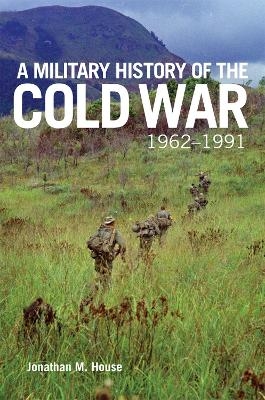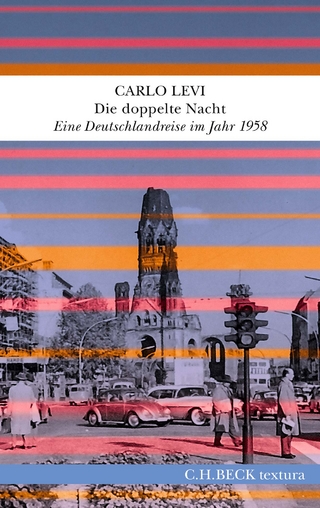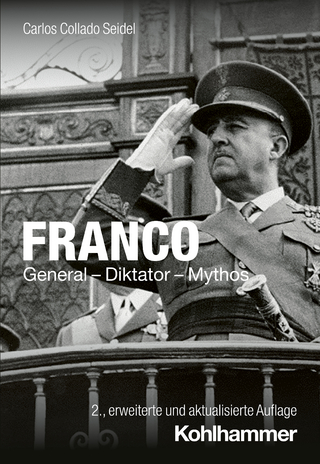
A Military History of the Cold War, 1962–1991
Seiten
2022
University of Oklahoma Press (Verlag)
978-0-8061-8704-4 (ISBN)
University of Oklahoma Press (Verlag)
978-0-8061-8704-4 (ISBN)
Study of the Cold War all too often shows us the war that wasn’t fought. The reality, of course, is that many ‘hot’ conflicts did occur, some with the great powers’ weapons and approval, others without. It is this reality, and this period of quasi-war and semiconflict, that Jonathan House plumbs in this volume.
Study of the Cold War all too often shows us the war that wasn’t fought. The reality, of course, is that many “hot” conflicts did occur, some with the great powers' weapons and approval, others without. It is this reality, and this period of quasi-war and semiconflict, that Jonathan M. House plumbs in A Military History of the Cold War, 1962–1991, a complex case study in the Clausewitzian relationship between policy and military force during a time of global upheaval and political realignment.
This volume opens a new perspective on three fraught decades of Cold War history, revealing how the realities of time, distance, resources, and military culture often constrained and diverted the inclinations or policies of world leaders. In addition to the Vietnam War and nuclear confrontations between the USSR and the United States, this period saw dozens of regional wars and insurgencies fought throughout Asia, Africa, and Latin America. Cuba, Pakistan, Indonesia, Israel, Egypt, and South Africa pursued their own goals in ways that drew the superpowers into regional disputes. Even clashes ostensibly unrelated to the politics of East-West confrontation, such as the Nigerian-Biafran conflict, the Falklands/Malvinas War, and the Indonesian occupation of East Timor, involved armed forces, weapons, and tactics developed for the larger conflict and thus come under House’s scrutiny. His study also takes up nontraditional or specialized aspects of the period, including weapons of mass destruction, civil-military relations, civil defense, and control of domestic disorders.
The result is a single, integrated survey and analysis of a complex period in geopolitical history, which fills a significant gap in our knowledge of the organization, logistics, operations, and tactics involved in conflict throughout the Cold War.
Study of the Cold War all too often shows us the war that wasn’t fought. The reality, of course, is that many “hot” conflicts did occur, some with the great powers' weapons and approval, others without. It is this reality, and this period of quasi-war and semiconflict, that Jonathan M. House plumbs in A Military History of the Cold War, 1962–1991, a complex case study in the Clausewitzian relationship between policy and military force during a time of global upheaval and political realignment.
This volume opens a new perspective on three fraught decades of Cold War history, revealing how the realities of time, distance, resources, and military culture often constrained and diverted the inclinations or policies of world leaders. In addition to the Vietnam War and nuclear confrontations between the USSR and the United States, this period saw dozens of regional wars and insurgencies fought throughout Asia, Africa, and Latin America. Cuba, Pakistan, Indonesia, Israel, Egypt, and South Africa pursued their own goals in ways that drew the superpowers into regional disputes. Even clashes ostensibly unrelated to the politics of East-West confrontation, such as the Nigerian-Biafran conflict, the Falklands/Malvinas War, and the Indonesian occupation of East Timor, involved armed forces, weapons, and tactics developed for the larger conflict and thus come under House’s scrutiny. His study also takes up nontraditional or specialized aspects of the period, including weapons of mass destruction, civil-military relations, civil defense, and control of domestic disorders.
The result is a single, integrated survey and analysis of a complex period in geopolitical history, which fills a significant gap in our knowledge of the organization, logistics, operations, and tactics involved in conflict throughout the Cold War.
Jonathan M. House is Professor Emeritus at the U.S. Army Command and General Staff College, Leavenworth, Kansas. He is author of Combined Arms Warfare in the Twentieth Century and Military Intelligence, 1870–1991 and coauthor, with David M. Glantz, of several studies of the Soviet-German conflict during World War II.
| Erscheinungsdatum | 28.01.2022 |
|---|---|
| Reihe/Serie | Campaigns and Commanders Series |
| Verlagsort | Oklahoma |
| Sprache | englisch |
| Maße | 152 x 229 mm |
| Gewicht | 646 g |
| Themenwelt | Geschichte ► Allgemeine Geschichte ► Zeitgeschichte |
| Geisteswissenschaften ► Geschichte ► Regional- / Ländergeschichte | |
| Geschichte ► Teilgebiete der Geschichte ► Militärgeschichte | |
| ISBN-10 | 0-8061-8704-2 / 0806187042 |
| ISBN-13 | 978-0-8061-8704-4 / 9780806187044 |
| Zustand | Neuware |
| Informationen gemäß Produktsicherheitsverordnung (GPSR) | |
| Haben Sie eine Frage zum Produkt? |
Mehr entdecken
aus dem Bereich
aus dem Bereich
eine Deutschlandreise im Jahr 1958
Buch | Hardcover (2024)
C.H.Beck (Verlag)
20,00 €


